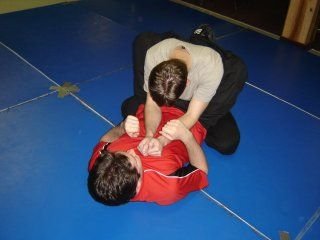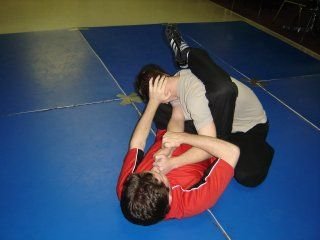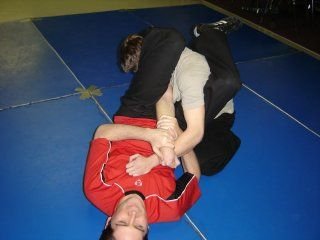Kyle is in my guard, and has a right arm on my chest.

I trap his right arm with my right hand, my left hand pushes his face to my left keeping his head down. My left foot moves to his hip and pushes so that I spin to my right and my right foot goes up his back to his opposite shoulder.

I then move my left leg over his head and pinch in with my legs holding him in and squeeze my knees together. To finish I hold his arm to my chest and raise my hips


I trap his right arm with my right hand, my left hand pushes his face to my left keeping his head down. My left foot moves to his hip and pushes so that I spin to my right and my right foot goes up his back to his opposite shoulder.

I then move my left leg over his head and pinch in with my legs holding him in and squeeze my knees together. To finish I hold his arm to my chest and raise my hips

